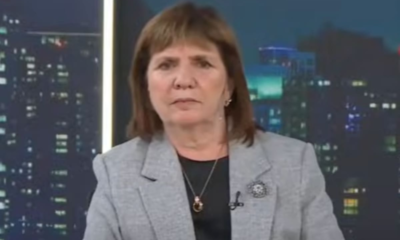INTERNACIONAL
Putin says Trump plans for Greenland ‘has nothing to do’ with Russia

Speaking from the Arctic as Vice President JD Vance prepared for his trip to Greenland to assess U.S. security concerns, Russian President Vladimir Putin said that Washington’s ambitions for the Arctic nation had «nothing to do» with Russia.
«In short, America’s plans in relation to Greenland are serious,» Putin said Thursday during an address to Russia’s Arctic Forum in Murmansk.
«These plans have deep historical roots,» he continued, according to a BBC report. «And it’s clear that the US will continue to systematically pursue its geo-strategic, military-political and economic interests in the Arctic.
«As for Greenland, this is a matter for two specific countries,» he added. «It has nothing to do with us.»
TRUMP SAYS ‘WE NEED GREENLAND FOR INTERNATIONAL SAFETY AND SECURITY’ AHEAD OF VANCE TRIP
Russian President Vladimir Putin meets with participants in Arctic expeditions for children organized by Rosatom in the Arctic Circle port city of Murmansk on Thursday. (Gavriil Grigorov/Pool/AFP via Getty Images)
Putin’s comments coincided with remarks by President Donald Trump, who on Thursday doubled down on his ambitions for the Arctic nation despite international rebuke, and said, «We need Greenland for international safety and security. We need it. We have to have it.»
«It’s [an] island from a defensive posture and even offensive posture is something we need,» he told radio host Vince Coglianese. «When you look at the ships going up their shore by the hundreds, it’s a busy place.»
Trump acknowledged he was unsure if the people of Greenland wanted to become U.S. citizens, but he said it was important to «convince them.»
Greenland’s citizens and leadership have repeatedly made clear they are not interested in becoming a part of the U.S. and are seeking full independence from Denmark.
It is unclear if the vice president will be advancing Trump’s message while visiting the U.S.’ Pituffik Space Force base in northwest Greenland, but Vance and his wife, second lady Usha Vance, quickly changed their itinerary earlier this week upon announcing the planned trip after Greenland’s leaders made clear the Vances were not issued an invitation — sparking a diplomatic uproar.
GREENLAND PM SLAMS UPCOMING VISIT FROM USHA VANCE AS ‘VERY AGGRESSIVE’ PROVOCATION: REPORT
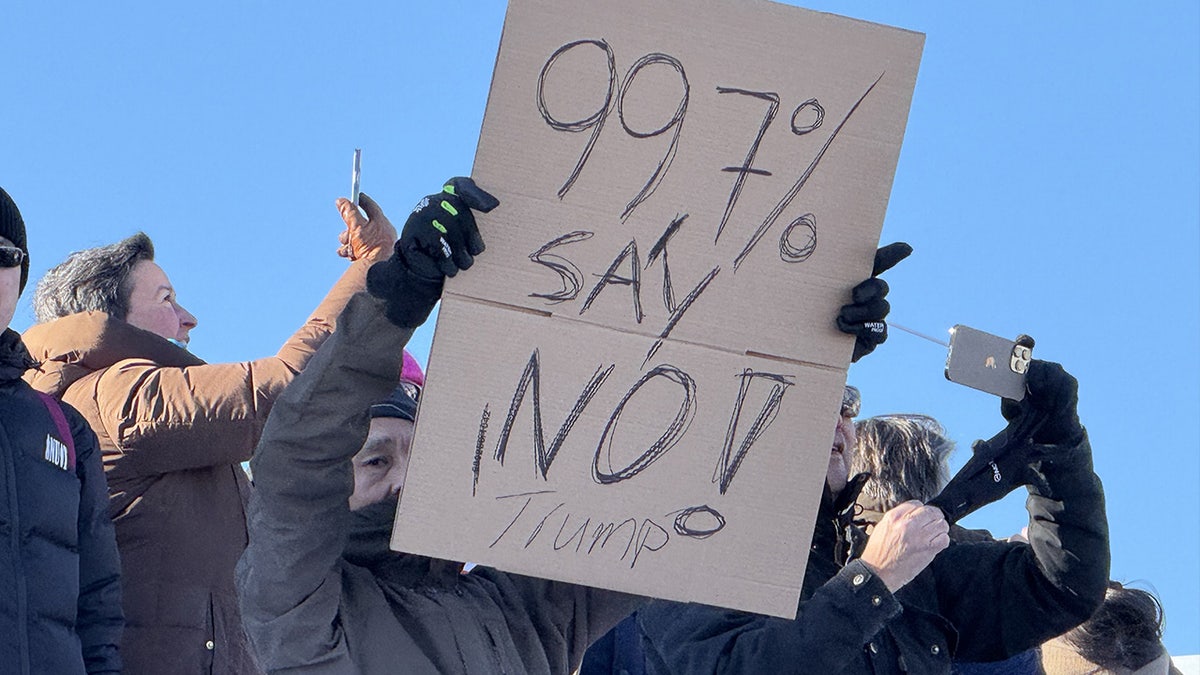
Around 1,000 Greenlanders gather in the city center in Nuuk, Greenland, and march to the U.S. Consulate building located on the outskirts of the city to protest President Donald Trump’s recent remarks on the sovereignty of their country on March 15. (Ahmet Gurhan Kartal/Anadolu via Getty Images)
However, as Trump claims the Arctic nation is needed for U.S. security, Russian officials are now touting the idea that Washington and Moscow could expand economic cooperation in the Arctic.
«We are open to considering different investment opportunities that we can do jointly with the U.S., in certain sectors approved by the Russian government,» Putin’s envoy for foreign investment and economic cooperation, Kirill Dmitriev, said according to the BBC report, which also noted the Kremlin official has already been in «direct talks» with the U.S.
«We are open for investment cooperation in the Arctic. That could be in logistics, or other areas beneficial to Russia and to the U.S.,» Dmitriev added.
Russia has stalled U.S. attempts to secure a ceasefire in Ukraine by laying out conditions European nations have made clear they will not agree to, like lifting sanctions and booting Ukrainian President Volodymyr Zelenskyy from office — which security experts have long warned is Putin’s chief aim to cement control over the former Soviet nation.
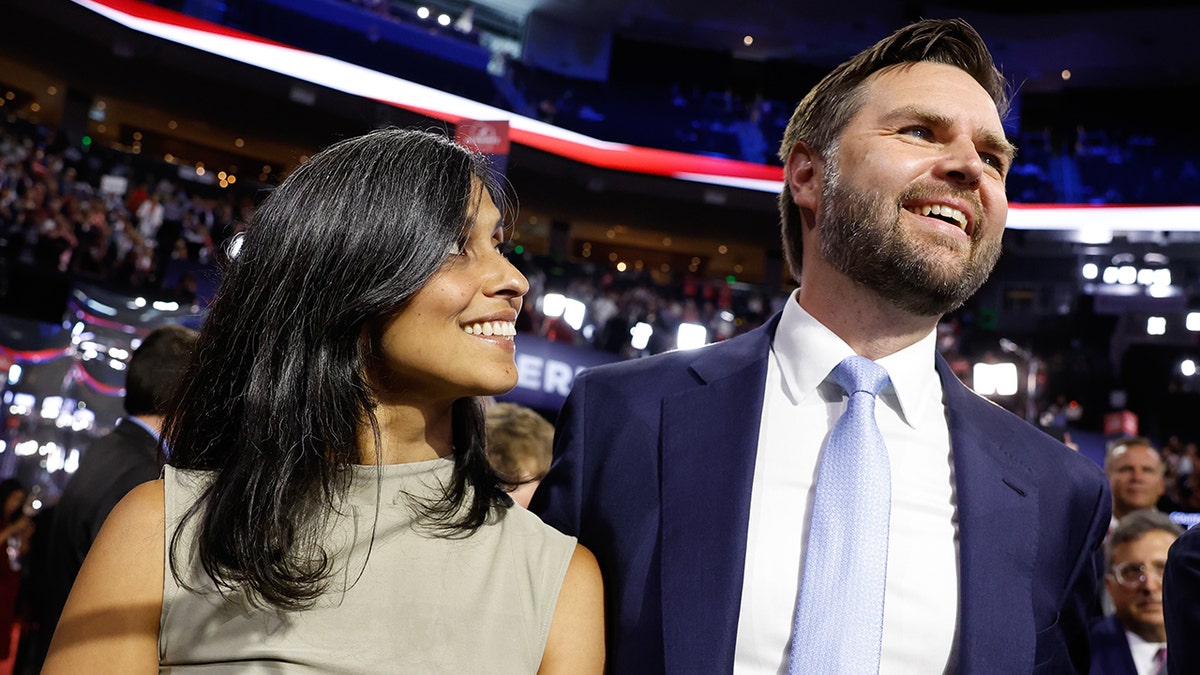
Sen. JD Vance, R-Ohio, and his wife Usha Chilukuri Vance look on as he is nominated for the office of vice president on the first day of the Republican National Convention at Fiserv Forum in Milwaukee on July 15, 2024. ( Anna Moneymaker/Getty Images)
CLICK HERE TO GET THE FOX NEWS APP
Putin reiterated this goal during his address from the Arctic and said, «We could, of course, discuss with the United States, even with European countries, and of course with our partners and friends, under the auspices of the UN, the possibility of establishing a transitional administration in Ukraine.»
It remains highly unlikely Ukraine or its European partners, including France and the U.K. who sit on the UN Security Council, will agree to Putin’s conditions.
Anders Hagstrom contributed to this report.
INTERNACIONAL
Cómo una ciudad fronteriza china mantiene a flote a la economía rusa
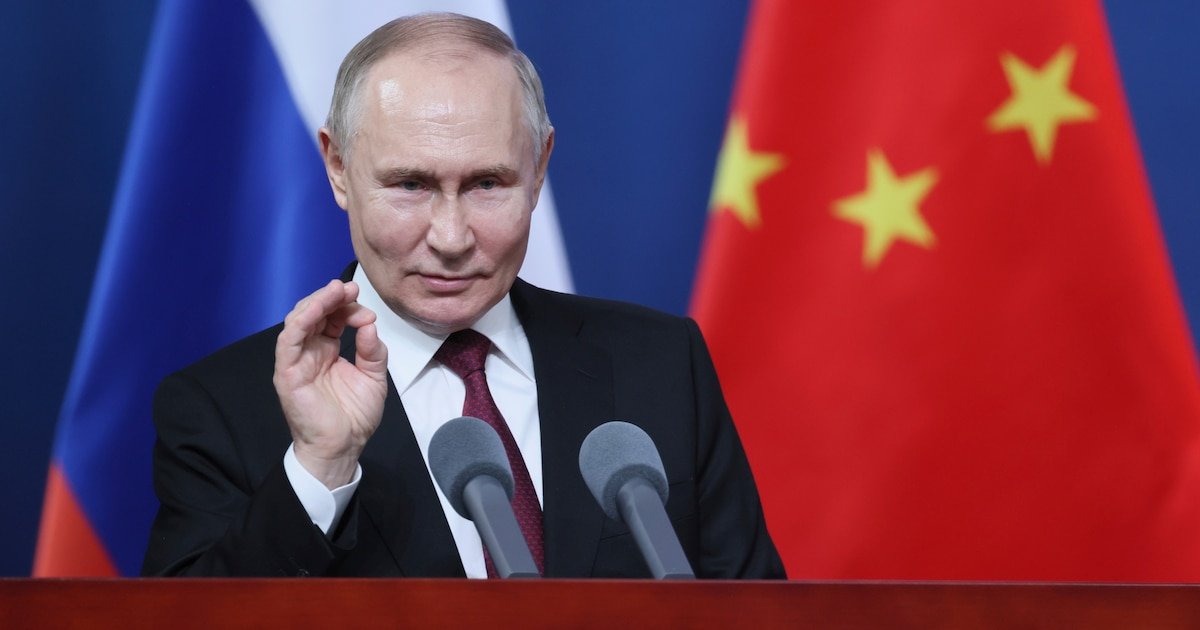
Miles de toneladas de madera siberiana cruzan la frontera hacia China por la ciudad de Manzhouli, donde son procesadas para fabricar componentes de muebles y palillos, mientras grandes cargamentos de colza rusa llegan para su conversión en aceite de canola. El dinamismo en este cruce fronterizo refleja cómo las economías de ambos países han reforzado su interdependencia desde la invasión rusa de Ucrania en febrero de 2022.
El comercio bilateral superó los 240.000 millones de dólares el año pasado, un incremento del 66% respecto al periodo previo al conflicto. China se ha consolidado como el mayor comprador de petróleo, madera y carbón rusos, y se encuentra próxima a convertirse en el principal destino del gas natural de Rusia. Además, los datos muestran que el intercambio no solo incluye materias primas: el flujo de productos manufacturados chinos hacia Rusia, como ropa, electrónica y vehículos, ha crecido un 71% desde el inicio de la guerra.
Manzhouli mantiene un rol central en este intercambio. La ciudad, que cuenta con una línea férrea construida por Rusia en 1900, ve diariamente el paso de trenes y camiones cargados de materias primas. El eslogan económico oficial describe el modelo como “suministro ruso, procesamiento chino”, remarcando la función de Rusia como proveedor de materias primas para la industria manufacturera china, que supera ampliamente en escala a la rusa.
Cerca del 6% de la economía rusa ya depende de las exportaciones a China, una proporción comparable a la de Irán, otro país afectado por sanciones internacionales. A consecuencia de las restricciones impuestas por decenas de naciones a la economía rusa, Moscú ha reorientado su comercio exterior hacia el este, dependiendo cada vez más de su relación económica con Beijing.
En la actualidad, Rusia abastece a China de recursos como maderas de pino para construcción y mobiliario, abedul blanco para palillos, álamo para molduras y olmo resistente para soportes de minas de carbón, mientras importa del gigante asiático equipamiento industrial, bienes de consumo y automóviles. Según la Organización de las Naciones Unidas para el Desarrollo Industrial, la cuota de Rusia en la manufactura global es de solo 1,33%. China, en cambio, produce el 32% de los bienes manufacturados en el mundo.

Esta asimetría ha hecho que Rusia adopte un papel de proveedor de materias primas y consumidor de productos acabados chinos, consolidando en la frontera de Manzhouli el epicentro de una relación comercial estratégica marcada por el cambio de poder económico y la influencia de las sanciones internacionales.
La postura de China frente a la guerra en Ucrania ha fortalecido su relación con Rusia y generado fricciones con la Unión Europea (UE). Según directivos de ambos países, como el ministro de Asuntos Exteriores chino, Wang Yi, tras reunirse con su homólogo ruso, Sergey V. Lavrov, “las relaciones chino-rusas representan la relación entre grandes potencias más estable, madura y significativa en materia estratégica en la actualidad”. El suministro de drones y componentes por parte de empresas chinas para su uso en el conflicto destaca como muestra concreta de este apoyo.
Para la Unión Europea, esta colaboración ha suscitado preocupación. En una cumbre celebrada en Beijing, los dirigentes comunitarios solicitaron nuevamente a Xi Jinping, principal líder chino, que redujera la cooperación económica e industrial de China con Rusia en el contexto de la guerra. Ursula von der Leyen, presidenta de la Comisión Europea, advirtió que el posicionamiento chino en el conflicto sería “un factor determinante” para las futuras relaciones bilaterales y que el respaldo continuo de China a Rusia genera “inestabilidad e inseguridad en Europa”.
El desplazamiento de importaciones de China hacia productos rusos ha tenido consecuencias para terceros países, como Canadá. Tras posicionarse junto a Estados Unidos y respaldar el aumento de aranceles a productos chinos, Canadá vio cómo China sustituyó importaciones de materias primas, especialmente la colza, optando por proveedores rusos. En represalia, el gobierno chino impuso aranceles del 100% a las importaciones canadienses de aceite y harina de canola, además de iniciar una investigación comercial sobre el envío de colza canadiense.
Estas medidas repercuten directamente en la estructura de las cadenas de suministro en Asia y contribuyen a realinear los flujos globales de materias primas, al tiempo que evidencian el uso de instrumentos comerciales para la presión política y la competencia por mercados estratégicos.

Las relaciones comerciales entre China y Rusia han mostrado señales puntuales de tensión, principalmente en el ámbito de las materias primas y el mercado automovilístico. Autoridades rusas prohibieron la exportación de pino recién cortado hacia territorio chino, imponiendo que la corteza se retire y los troncos sean aserrados en serrerías siberianas antes de su envío. Esta medida ha incomodado a empresarios chinos como Huang Baoqiang, gestor de un aserradero cercano a la frontera, que ve encarecido y complicado el acceso directo al recurso.
En respuesta a la competencia rusa en el sector energético, China introdujo aranceles a la importación de carbón ruso a principios del año pasado, tras el incremento de la producción de sus minas estatales. Estas acciones muestran que, pese al estrechamiento de la alianza, ambos gobiernos priorizan la protección de sus respectivas industrias cuando los intereses nacionales chocan.

El mercado automovilístico ruso ha experimentado una transformación significativa tras la retirada de los fabricantes occidentales después de la invasión a Ucrania. Los vehículos fabricados en China pasaron de tener una presencia marginal en 2021 a abarcar el 60% de las ventas en Rusia a finales del año pasado, según la consultora GlobalData Automotive. Ante el retroceso de las marcas occidentales, el gobierno ruso impuso desde el 1 de octubre una tasa de importación de 7.500 dólares a los automóviles nuevos, aunque dejó exentas las compras de autos usados por ciudadanos rusos.
Empresarios chinos en Manzhouli han aprovechado esta excepción. A poca distancia de la frontera, una sala de exhibición de autos usados, con una monumental puerta de bronce y un vestíbulo de 24 metros de altura, ofrece a los compradores rusos modelos casi nuevos de marcas como BMW, Land Rover, Volkswagen, y también de firmas chinas como Zeekr y Hongqi, permitiendo la exportación a Rusia sorteando el nuevo arancel. La ausencia de automóviles completamente nuevos y el aumento en la demanda de usados reflejan la rápida adaptación comercial ante las barreras regulatorias impuestas en el intercambio bilateral.
INTERNACIONAL
Trump administration releases over $6B in frozen education funds to the states
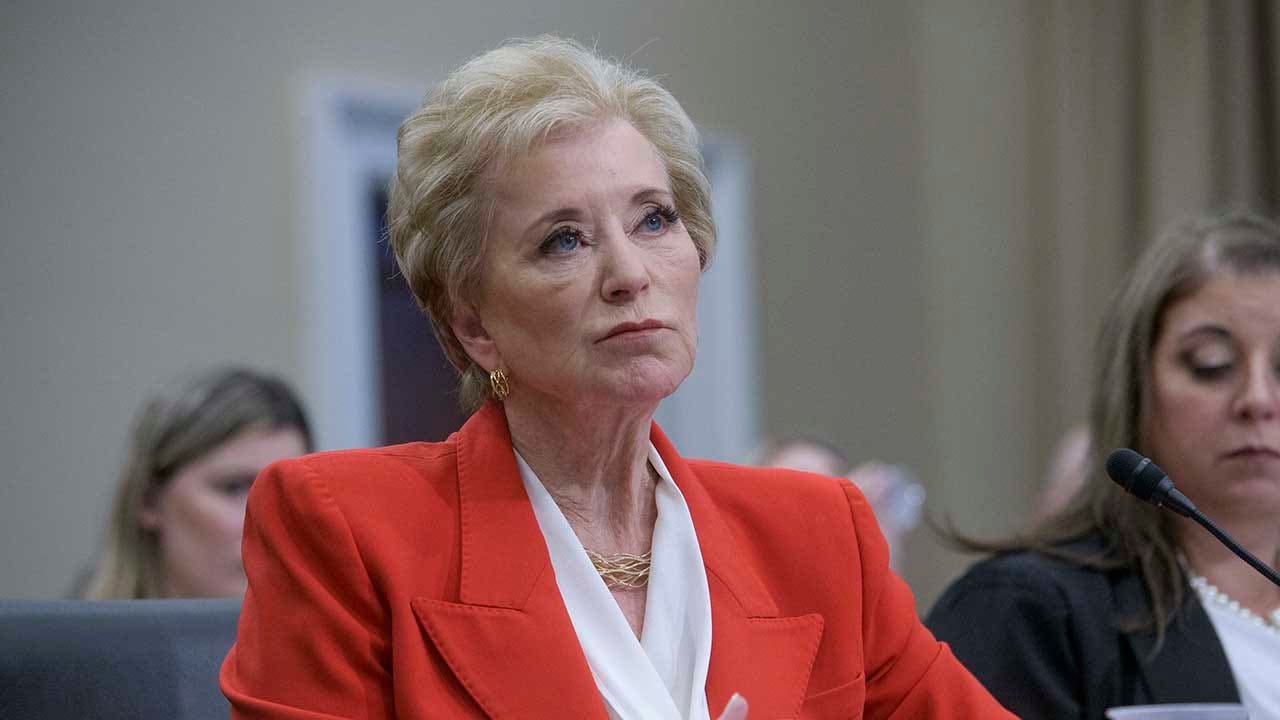
NEWYou can now listen to Fox News articles!
The Trump administration is releasing roughly $6.8 billion in previously frozen federal funds for K-12 programs, the Department of Education announced Friday. The announcement was made as Secretary Linda McMahon attended the National Governors Association (NGA) Summer Meeting in Colorado Springs, Colorado.
The Office of Management and Budget (OMB) «has completed its review of Title I-C, Title II-A, Title III-A and Title IV-A ESEA funds and Title II WIOA funds and has directed the Department to release all formula funds. The agency will begin dispersing funds to states next week,» department spokesperson Madi Biedermann told Fox News Digital.
More than 20 Democratic attorneys general sued the Trump administration earlier this month, describing the Department of Education’s federal funding freeze as unconstitutional and «debilitating» to states just weeks ahead of a new school year.
The bipartisan group of governors, including the NGA’s outgoing chair, Gov. Jared Polis of Colorado, and its vice chair, Gov. Kevin Stitt of Oklahoma, thanked McMahon for unlocking the funding during the NGA’s education session Friday.
DEMOCRAT AGS SUE TRUMP FOR ‘UNCONSCIONABLE’ FREEZE ON $6.8B IN K-12 SPENDING
Secretary of Education Linda McMahon testifies at a House Committee on Appropriations subcommittee budget hearing on the Department of Education on Capitol Hill May 21, 2025, in Washington. (AP Photo/Rod Lamkey, Jr.)
«How can we better communicate to make sure that this chaos and uncertainty doesn’t occur again around funding and that people know things earlier?» Polis asked McMahon on the Colorado Springs stage.
«No guarantees from me that we will eliminate all the communications gaps that do happen, but I can say that part of it is just the transition aspect,» McMahon explained.
The education secretary said the other aspect of the federal funding freeze was that the OMB budget office «took some time to really review the title funding to look at all the programs, etc., before they were released. They were well satisfied. So, now, those funds are going to be going out.»
TRUMP ADMIN SEEKING TO PULL FUNDING FROM LOCAL GOVERNMENTS SLAPPED WITH JUDGE’S PRELIMINARY INJUNCTION
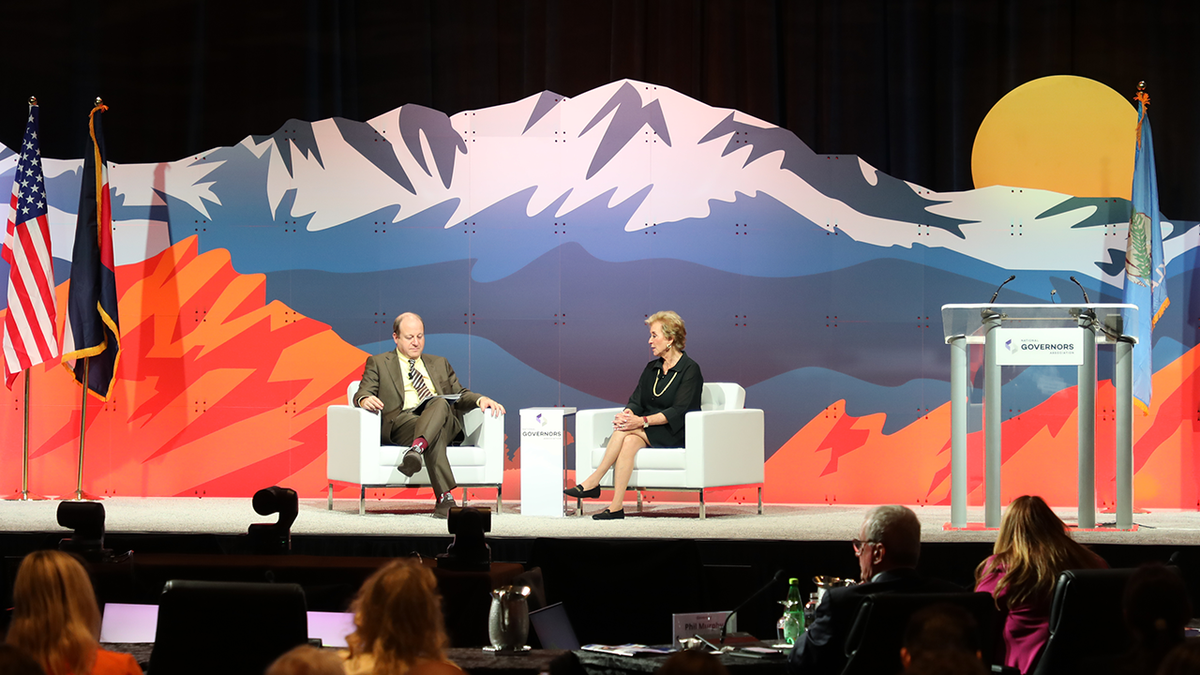
Colorado Gov. Jared Polis, the National Governors Association’s outgoing chair, discusses American education with Education Secretary Linda McMahon at the NGA Summer meeting in Colorado Springs, Colo., Friday, July 25, 2025. (Deirdre Heavey/Fox News Digital)
McMahon assured the governors that now that they have reviewed title funding and gone through the process, «we wouldn’t find ourselves in the same situation.»
Several of the governors who attended Polis and McMahon’s education discussion and had the opportunity to ask questions thanked the education leader for returning the federal title funds to the states.
Polis kicked off the NGA’s summer session in Colorado Springs Friday with his signature policy agenda, «Let’s Get Ready! Educating All Americans for Success.»
EDUCATION SECRETARY LINDA MCMAHON TOUTS COLUMBIA UNIVERSITY’S $200M SETTLEMENT ‘TEMPLATE’
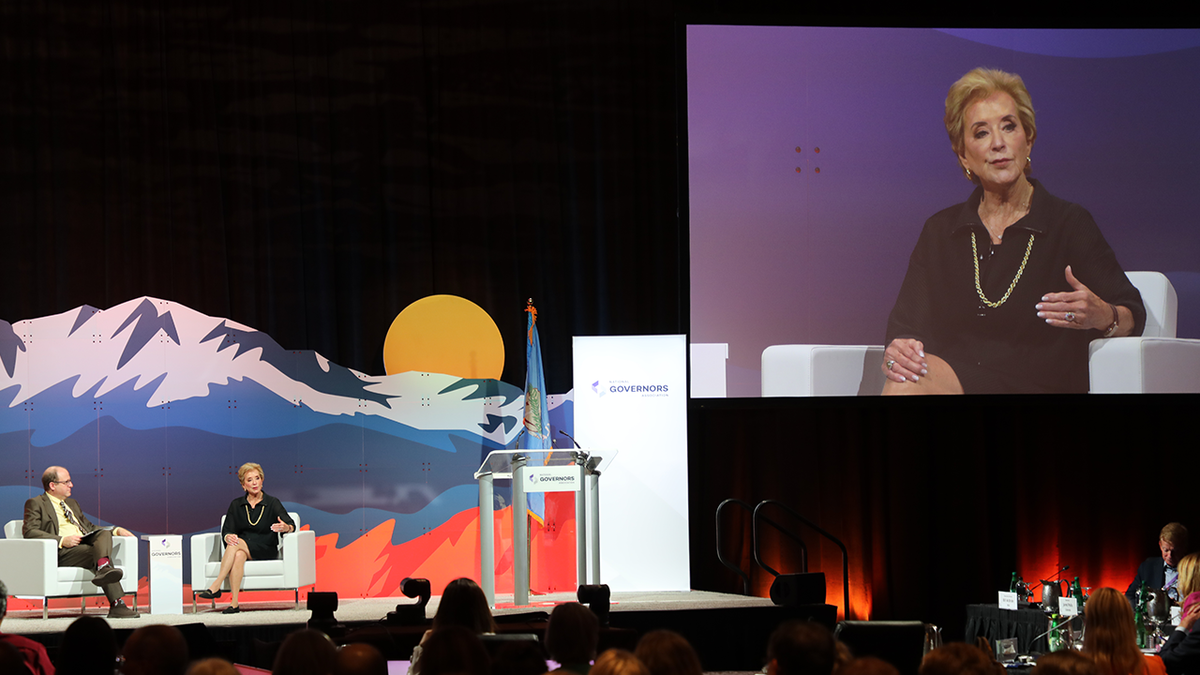
Education Secretary Linda McMahon delivers remarks at the National Governors Association summer meeting in Colorado Springs, Colo., Friday, July 25. (Deirdre Heavey/Fox News Digital)
McMahon said she was appreciative of the governors’ questions and comments, and she committed to visiting as many states and speaking with as many governors as possible to grasp the full scope of the country’s diverse educational needs.
Polis and Stitt said in a joint statement released by NGA that they are «thankful these bipartisan discussions with Secretary McMahon and other key officials during the NGA Summer Meeting led to the distribution of these education funds.»
«This action ensures schools across the nation can maintain essential programs for English language learners, teacher training, and student enrichment as the new academic year begins,» the NGA leaders said, emphasizing that «governors from both parties stand united in prioritizing our children’s education, and we’re proud our advocacy helped secure this vital support for states and districts.»
In an exclusive interview with Fox News Digital ahead of her remarks, McMahon affirmed her commitment to collaborating with governors as the Trump administration seeks to dismantle the Department of Education.
«It’s just incredibly important that if we are going to return education to the states, we have to talk to the governors,» McMahon said.
«Clearly, education is a nonpartisan issue,» McMahon added. «If we’re going to return education to the states, that just means giving them back the part that is now provided by the federal government, and they’re anxious for it.»
CLICK HERE TO GET THE FOX NEWS APP
Trump signed an executive order earlier this year to dismantle the Department of Education, fulfilling one of his key campaign promises during the 2024 presidential election.
Fox News Digital’s Breanne Deppisch contributed to this report.
INTERNACIONAL
Europeans meet with Iranian officials face-to-face for first time since Israel, US bombings as sanctions loom
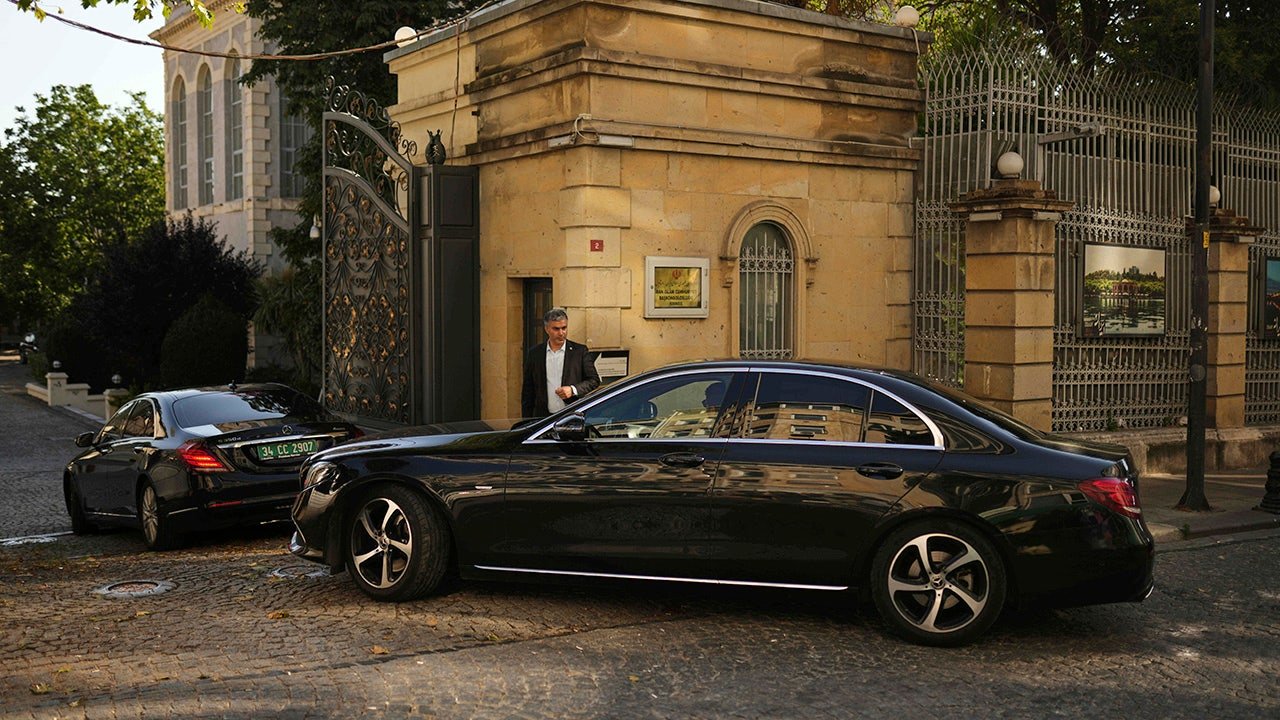
NEWYou can now listen to Fox News articles!
European diplomats met with Iranians on Friday face-to-face for the first time since Israel and the U.S. bombed the country last month.
The «serious, frank and detailed» meeting in Istanbul, Turkey, lasted for around four hours and the officials all agreed to meet again for continued negotiations on Iran’s nuclear program.
Sanctions that were lifted on Iran in 2015 after it agreed to restrictions and monitoring of its nuclear program could be reimposed if Iran doesn’t comply with requirements.
One of Europe’s E3 nations – Britain, France and Germany, who held the talks with Iran – could bring back sanctions under the «snapback» mechanism, which allows one of the European countries to bring back U.N. sanctions if Iran violates the conditions.
IRAN SEEKS CHINA, RUSSIA HELP TO STALL UN SANCTIONS AHEAD OF NUCLEAR TALKS WITH EUROPEANS
Cars, which are believed to carry European diplomats, enter the Iranian consulate ahead of a meeting with Iranian counterparts for talks over Tehran’s nuclear program, in Istanbul, Turkey, Friday, July 25, 2025. (AP Photo/Francisco Seco)
European leaders have also said that sanctions will start being reinstated by the end of August if there is no progress on reining in Iran’s nuclear program.
«A possible delay in triggering snapback has been floated to the Iranians on the condition that there is credible diplomatic engagement by Iran, that they resume full cooperation with the IAEA (International Atomic Energy Agency), and that they address concerns about their highly-enriched uranium stockpile,» a European diplomat said on condition of anonymity before the talks on Friday.
The diplomat added that the snapback mechanism «remains on the table.»
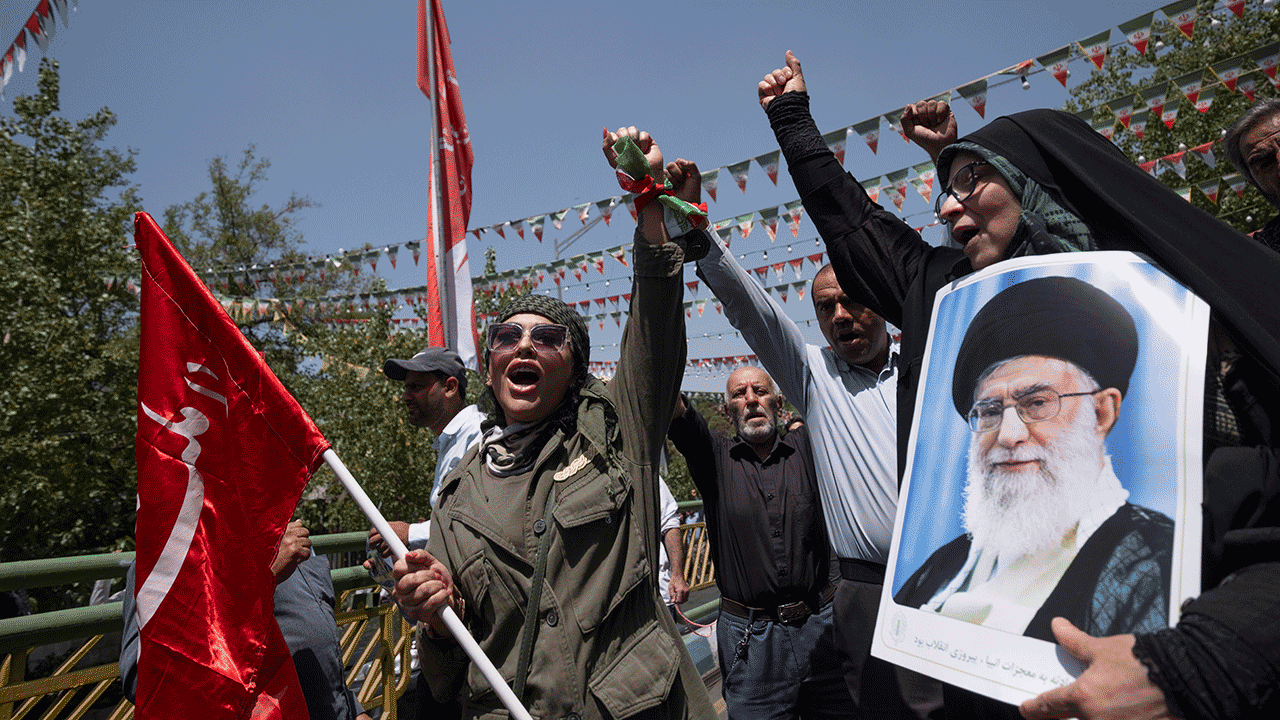
Iranian worshippers shout anti-U.S. and anti-Israeli slogans as one of them holds a portrait of Iran’s Supreme Leader, Ayatollah Ali Khamenei, during an anti-Israeli rally to condemn Israeli attacks on Iran, after Tehran’s Friday prayers in Tehran, Iran, on June 20, 2025. (Photo by Morteza Nikoubazl/NurPhoto via Getty Images)
IRAN VOWS RETALIATION IF UN SECURITY COUNCIL ISSUES SNAPBACK SANCTIONS ON ANNIVERSARY OF NUCLEAR DEAL
Iran said that the U.S. needs to rejoin the 2015 nuclear deal – after President Trump pulled America out of it in 2018 – saying Iran has «absolutely no trust in the United States.»
The U.S. bombed Iran’s nuclear sites on June 22, a little over a week after Israel had bombed the country over national security concerns about its nuclear program.
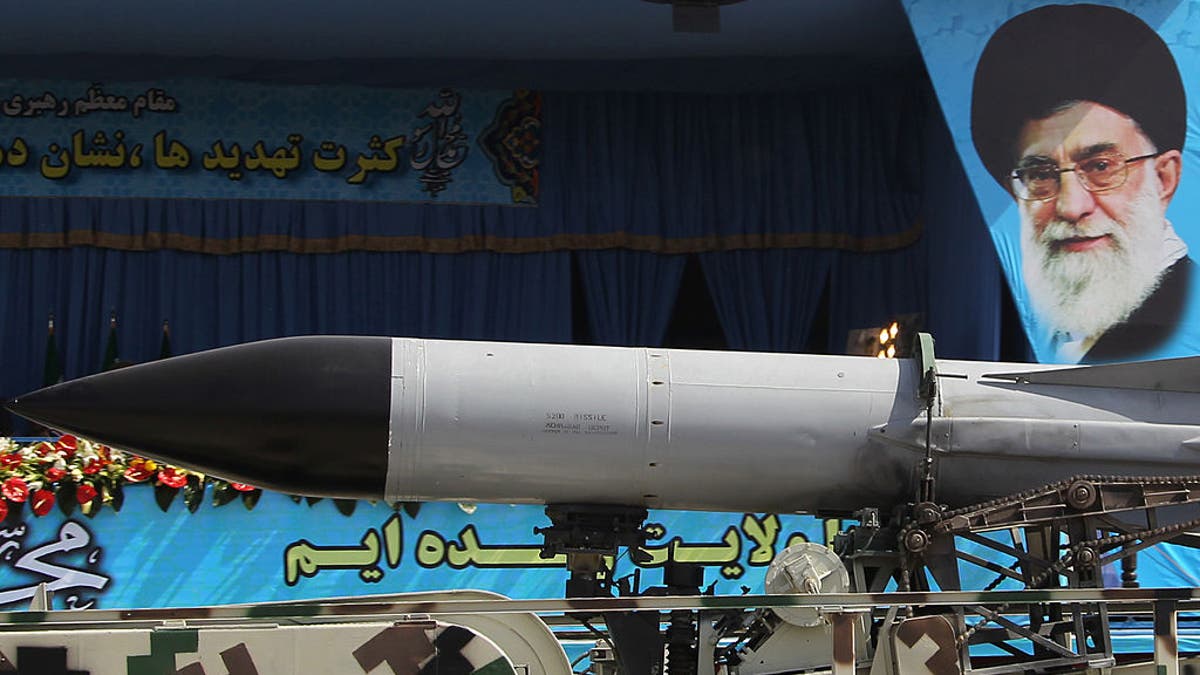
A military truck carries a missile past a portrait of Iran’s Supreme Leader Ayatollah Ali Khamenei during an annual military parade. (ATTA KENARE/AFP/GettyImages))
Iran responded by attacking Israel and a U.S. Army base in Qatar.
Isreal and Iran agreed to a ceasefire on June 24.
CLICK HERE TO GET THE FOX NEWS APP
The IAEA issued a concerning report in May that said that Iran’s stockpile of near-weapons-grade enriched uranium had grown by nearly 50% in three months.
The Associated Press contributed to this report.

 POLITICA2 días ago
POLITICA2 días agoMáximo Kirchner declaró una fortuna de 8.300 millones de pesos: representa un 76% más que el año anterior

 POLITICA1 día ago
POLITICA1 día agoLa justicia de Santa Cruz desafío a la Corte Suprema e incluyó a Cristina Kirchner en el padrón electoral

 POLITICA2 días ago
POLITICA2 días agoQué dijo Javier Milei en la Derecha Fest: las frases más impactantes
















